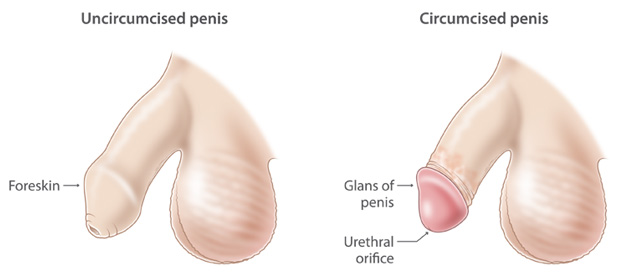Male circumcision is an elective surgery to remove the foreskin of the penis (prepuce). The foreskin like the appendix is a remnant part from our evolutionary past and it is mostly believed now to serve no essential purpose. The procedure has been performed to infants from the dawn of history for various religious and cultural reasons.
This procedure is most commonly done on newborns and is BEST PERFORMED IN THE FIRST 5-10 DAYS OF LIFE when it is least associated with complications and much better outcome, though the procedure can be performed in the first few weeks of life.
Worldwide, around a quarter of all males are circumcised. This varies from country to country. About 60 % of American males, 20% of British and Canadian males and 15% of Australian males are circumcised.
The decision to circumcise the male infant rests totally on the parents. When you make this decision, it may help you to weigh up the benefits and potential risks of the surgery, consider your reasons for having the procedure done, whether personal, religious, cultural, tradition etc.

Circumcision is medically indicated to treat and/or totally prevent problems with the foreskin of the penis such as (phimosis, paraphimosis, chordee and recurrent balanitis).
Problems from circumcision are rare. Should they occur, they are usually treatable and not significant although fatal outcome have been reported.
Sexual function should not be adversely affected by newborn circumcision.
The main complication of circumcision we endeavour to avoid is bleeding. The earlier the procedure is performed the risk of bleeding is considerably reduced.

